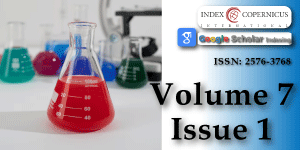Natural color performance from nine species origins of lowland wood wastes
Main Article Content
Abstract
In the past, natural pigments derived from plant-biomass wastes had been widely used for coloring purposes (e.g. fabrics/batik), before finally getting pushed aside by the imported synthetic/inorganic pigments. Thorough attempts to revive the use of such natural pigments then deserve carrying out. Relevantly, conducting storage of liquid/wet or dry natural coloring pigments, extracted from wood wastes; and use of fixatives for batik fabrics intended to impart fabric-color variations. Wood wastes (i.e. leaves and barks) were obtained from nine plant species (Acacia mangium Willd, Avicenia marina L, Caesalpinia sappan L, Ceriop tagal Perr. CB. Rob, Pelthophorum ferruginum Benth, Rhyzophora mucronata Lamk, Tectona grandis Linn.f., Terminalia catappa L and Xylocarpus granatum KD Koenig.), prevalently growing on plain/lowland areas; and their wood portions commonly utilized by wood industries, which generate similar wastes enormously. The pigments in liquid/wet and then in dry forms were produced from those wastes. The production process of pigments adopted traditions by local batik crafters in Bogor. Variations occurring in fabric colors could be due to fixatives, i.e. lime (CaCO3), ferrous sulphate/tunjung (FeSO4); and various wastes. Six-month storage insignificantly changed the coloring qualities of natural coloring pigments applied to fabrics, compared to those of corresponding initially produced pigments. Leaf wastes always contained green-colored compounds, while bark wastes appeared aptly brownish in color. Color performances of bark extracts at fabrics with ferro-sulfat fixative brought about strong grey colors, and with lime fixative produced brown colors. Coloring of fabrics using leaf waste extracts with ferro-sulfat fixative aptly exhibited greenish grey; while with lime fixative became reddish brown. Testing results on the leaching resistance of pigment-colored and fixative-treated fabrics against rubbing and exposure to sunlight revealed a very good category (4-5), but against detergent, washing was very low (2-3).
Article Details
Copyright (c) 2023 Saefudin B.

This work is licensed under a Creative Commons Attribution 4.0 International License.
Premium Batik Collection. 2012. Get to know natural and synthetic batik dyes (reactive dyes, indigosol, napthol, and rapid). http://www.kidungasmara.com/blog/ get to know natural-batik-dye-and-intetic-dye-reactive-indigosolnapthol-and-rapid/, December 6 2017.
Saefudin E, Basri A, Santosa. Natural Materials Batik Dyes and Weaving. Ford Press. Bogor. 2018; 88.
Sjostrom, E. Wood Chemistry: Fundamentals and Aplications. Second Edition. California. 2013.
Rosyida A, Zulfiya A. Dyeing of textile materials using jackfruit wood extract and coloring techniques to obtain optimal results. Journal. Process Engineering. 2013; 7 (2):52-58.
Kwartiningsih E, Dwi AS, Agus W, Adi T. Textile natural dyes from mangosteen rind. Equilibrium. 2009; 41-47.
Panshin AJ, de Zeeuw C. Textbook of Wood Technology. Vol I. McGraw-Hill Book Co. New York (USA) - London (UK) - Toronto (Canada) - Dusseldorf (West Germany). 1980.
Haygreen JG, Bowyer JL. Forest Products and Wood Science. An Introduction. 2nd ed. Iowa State University Press. Ames, IA, USA. 1999.
Basri E. Report on the Transfer of Technology on the Utilization of Tannins from Acacia Skins for Natural Dyes for Kalimantan Batik in the Pagatan Weaving Craftsmen Group, Tanah Bumbu. South Kalimantan. 2017.
Harborne JB. Phytochemical methods: A guide to the modern way of analyzing plants. 2nd ed. Translated by K Padmawinata and I. Soediro. ITB Institute, Bangung. 1987.
Hosettman K. Assay for Bioactivity, Methods in Plantt Biochemistry. London: Academic Press. Koswara. 1991; 6: 2009.
Djarwaningsih ST, Kuncari ES, Diah Jatiningrum. Final Report on PUSINOV Incubation Activities: Production of Natural Batik Dyes at CSC, Cibinong, Bogor. 2017.
Basri E. Balfas J. Impregnation of teak extract and resin on fast growing teak and rubber. Journal of Forest Products Research. 2013; 32 (4):283-296.
Anonim. The Chemistry of Autumn Colors. 2006. https;www.scifun.chem.wisc.edu. 18 March, 2008.
Basri E, Santoso A, Rahmat.Transfer of technology for the use of tannins from Acacia mangium skin for natural dyes for Kalimantan batik at the Pagatan Weaving Craftsmen Group, Tanah Bumbu. Cooperation Report of the Center for Research and Development of Forest Products with PT Tunas Inti Abadi Kal-Selatan. Bogor: Center for Research and Development of Forest Products. 2017.
Prayitno RE, Wijana S, Diyah BS. Effect of fixation on fastness and color intensity of batik mori fabric dyed from avocado leaves (Persea americana Mill). Thesis. Malang: Fac. Agricultural Technology, Univ. Brawijaya. 2012..
Priyo. Loba A Rare Natural Color Enhancer Plant. FORDA (Kupang 10/11/2-14). 2014.
Pujilestari, T. Review: Source and utilization of natural dyes for industrial purposes. Dynamics of Crafts and Batik. 2015; 32(2):93-106.
Rymbai H, Sharma RR, Srivasta M. Bio-colorants and Its Implications in Health and Food Industry–A Review. International Journal of Pharmacological Research. 2011; 3:2228-2244.
Santa E, Mukarlina, Linda R. Ethnobotanical study of plants used as natural dyes by the Dayak Iban in Mension Village, Kapuas Hulu District. Jurn. Protobiont. 2015; 4(1):58-61.
Susanto S. Indonesian batik art. Yogyakarta: Batik and Handicraft Research Institute. 1980.
Law of the Republic of Indonesia. Concerning Access to Genetic Resources & their Fair Use. Jakarta. 2013; 11

